BYD Han EV Quattro Performance Premier: A Quick Review
As the highest-end model of BYD, Han EV, standing on a mature platform, not only has sufficient cruising range but also boasts a sporty and cool appearance. In particular, the all-wheel-drive high-performance version, which has squeezed into the 4-second club, has a power that rivals supercars. How does it perform in practice? Let’s find out.

Quick Facts about BYD Han EV Quattro Performance Premier
-
Han EV Quattro Performance Premier is the top model of the whole BYD Han EV series, with a post-subsidy price of CNY 2.795 million.
-
The all-wheel-drive system is composed of front and rear dual motors, with a total power of 363 kW (494 PS) and a maximum torque of 680 N·m. It takes only 3.9 seconds to accelerate from 0 to 100 km/h.
-
Like other versions, the all-wheel-drive model also uses a blade battery with lithium iron phosphate, with a capacity of 76.9 kWh, and a NEDC range of 550 km.
-
The blade battery pack adopts a high-voltage platform design, with an output voltage of up to 570 V. In cooperation with an advanced thermal management system, the peak charging current can reach 800 A, and it takes only 25 minutes to charge the battery from 30% to 80% in fast charging mode.
Driving Performance

As this test drive was for the all-wheel-drive high-performance version, let’s talk about the driving performance first. The total power of the front and rear dual motors of this model reaches 363 kW, and the total torque is 680 N·m. It only takes 3.9 seconds to accelerate from 0 to 100 km/h. When you fully accelerate, you can feel a strong push-back force and aggressive power response. It is basically “whoever meets on the road is overtaken”.

The high-performance version has two driving modes, ECO and SPORT. The acceleration performance in ECO mode is clearly sufficient, even for high-speed driving without any sluggishness. In SPORT mode, the power reserve of the car is even excessive. Occasionally trying something fresh is enough; otherwise, your family sitting in the back seat may have to suspend their breath.
A little bit of knowledge to supplement, the reason why the high-performance version can break through 100 km/h in 3.9 seconds is due to the use of silicon carbide modules for the first time in Han EV. This module can reduce internal resistance and improve the overcurrent capability of the electronic control system. In simple terms, it can make the motor burst out its limit power and torque.However, for this reason, when you hit the accelerator and maintain it, the BYD Han’s acceleration will gradually decrease, even if the speed is maintained above 80 km/h, there is still a significant difference in initial acceleration, especially in SPORT mode, where this feeling is more obvious.

In terms of sound insulation, thanks to the use of double-layer glass in both the driver and passenger windows, the interior quietness of the BYD Han is quite good. Especially at high speeds, at 120 km/h or even higher, the control of the wind and road noise in the entire cabin is very good. Basically, 90% of the sound during driving comes from tire noise, after all, this car uses the Pirelli MC6 performance tire, and the tire noise is slightly noticeable on certain road conditions.
The brake pedal has a comfortable foot feel, and the overall braking force output is quite linear. There is decent braking force even in the initial stage of the accelerator pedal, and the combination of mechanical and electric braking is natural without any sudden feelings.

In terms of cornering, the steering calibration of the BYD Han EV is more biased towards comfort, so its steering response speed is average, but overall it is still easy to control.
At the same time, with the front MacPherson suspension and rear multi-link configuration, the Han can smooth out small bumps on the road and show a sense of composure. When passing through some long-wave undulating road surfaces, the support of the suspension is also good. However, when passing through larger bumps like speed bumps, the Han’s residual vibration will be slightly longer.

Overall, from a high-performance perspective, this car’s power performance is well-deserved, but its handling still leans toward a family car. After all, the inherent low center of gravity characteristic of electric vehicles gives it a certain level of sports capability. As for whether this high-performance style is good or not, it depends on the individual’s perspective. From a positive point of view, it really is a “high-performance car” suitable for daily use.
Review of the static section

Unlike BBA and Tesla, the BYD Han showcases a Chinese-style luxury, not only using BYD’s iconic “dragon face” design language but also integrating more electrified elements, such as a fully enclosed intake grille, a through-body decoration design that makes it more technologically advanced in appearance.
All models of Han EV are equipped with matrix-style LED headlights, as well as adaptive high and low beams, automatic headlights, and turn signal auxiliary lights. The sincerity is full of heart.

The side adopts a coupe-like curved design, and the lines extending from the wheel arches to the tailgate handle, and the lines extending from the rear door handle are connected to the tailgate. In addition, the recessed waistline under the door panel and the chrome trim strips at the middle and bottom of the front door panel all highlight the luxury temperament of this mid-to-large-size sedan.
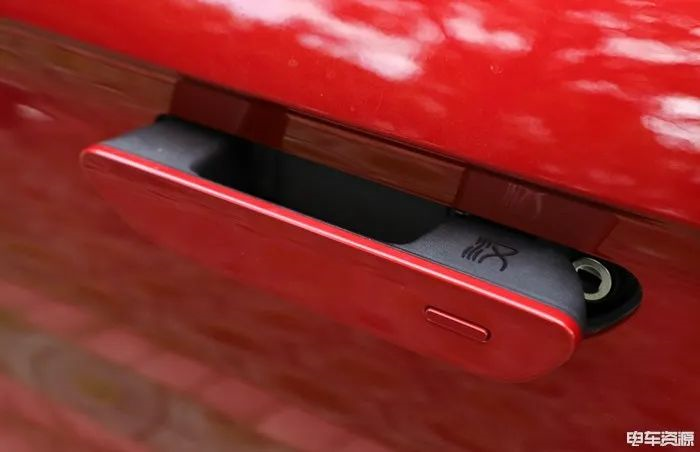
In addition, the four doors use hidden door handles, which not only effectively reduce the air resistance coefficient but also increase the aesthetic appearance. Worth mentioning is that the Chinese character “汉” is hidden inside the door handle, which can be said to have achieved extreme attention to detail.

The fast charging interface is arranged on the left fender, and the slow charging interface is arranged on the right fender. The 30%-80% charge can be completed in just 25 minutes in fast charging mode. In addition, it also supports discharge function, and the discharge power in camping power supply mode is 2.2 kW (220V AC power).

The parallel lines at the rear and the through-type taillights present a strong sense of hierarchy. Worth mentioning is that the top-equipped four-wheel-drive version of the car has achieved the result of zero to 100 kilometers acceleration time marked in the lower right corner of the trunk.

The overall interior adopts a symmetrical design, presenting a strong sense of embrace. In terms of workmanship and material selection for the interior, BYD Han uses a large amount of genuine leather and genuine wood materials for decoration, greatly enhancing the luxury of the interior. The Nappa leather-wrapped seats with dragon scale patterns further enhance the luxury. In short, driving Han EV out will never make you lose face.
 The 12.3-inch LCD instrument panel provides delicate and clear display effects for viewing functions such as range, fuel consumption, tire pressure monitoring, and multimedia information. It also offers three theme modes: classic, fashion, and sport.
The 12.3-inch LCD instrument panel provides delicate and clear display effects for viewing functions such as range, fuel consumption, tire pressure monitoring, and multimedia information. It also offers three theme modes: classic, fashion, and sport.

In addition, the dashboard is equipped with an acceleration timer that can provide acceleration timing of 0-50 kilometers per hour and 0-100 kilometers per hour.
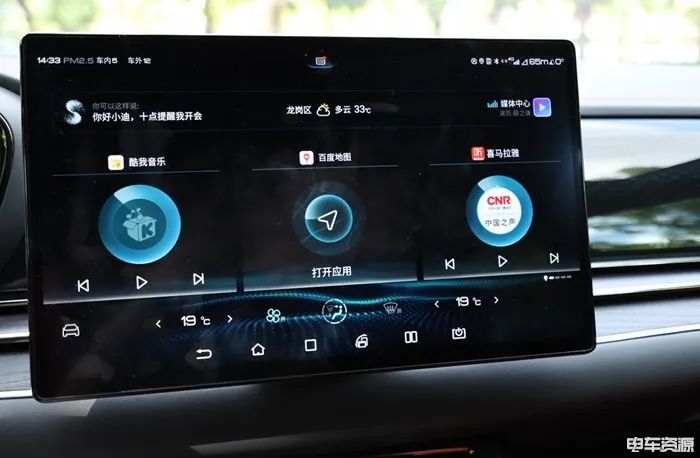
The 15.6-inch display screen provides clear display effects and still supports automatic flipping function. The screen is also equipped with the Dilink3.0 intelligent network system inside, with an overall visual effect that is not significantly different from other versions of BYD models. Functionally, it still supports functions such as Gaode, Baidu Maps, Internet, browsers, multimedia, and voice interaction. The screen is also equipped with Huawei and BYD app stores, where third-party applications can be downloaded according to personal needs.

Of course, HAN’s in-car system has always been an area that car owners complain about. The main problem is that the first batch of vehicle models use the Snapdragon 625 CPU for the in-car system, and the performance of this “mid-low-end processor from five years ago” is prone to issues such as lagging, crashing, and slow operation that are common to “old Android devices.”
However, due to the fact that this problem was mentioned by many car owners, the manufacturer later came up with a plan to upgrade the original Qualcomm 625 to Qualcomm 665 for 2,999 yuan. Regarding the actual performance of the in-car system after the upgrade, we have also conducted an evaluation in our previous article 《车机微体验 | 上身 Hicar 的比亚迪汉表现如何?》.
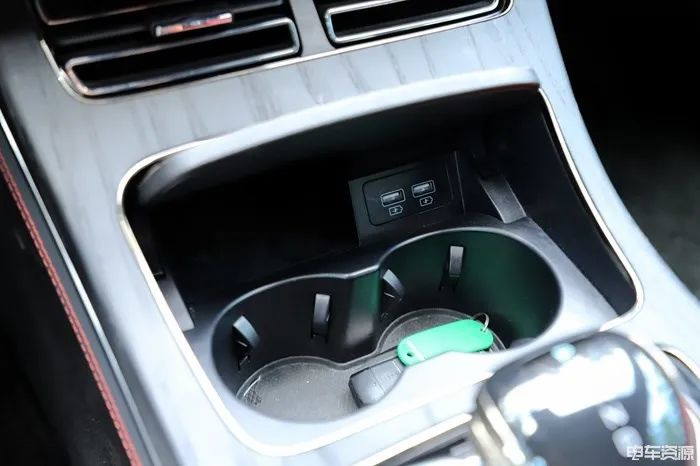
The convenient interior configuration of the vehicle is also relatively complete: it has four USB ports, a wireless charging position, and a rear air conditioning outlet control panel.

At the same time, the central armrest in the rear row provides a control panel similar to a Pad, which can adjust air conditioning, entertainment, and other functions, but the panel cannot be removed.
The “Ge You lying” Space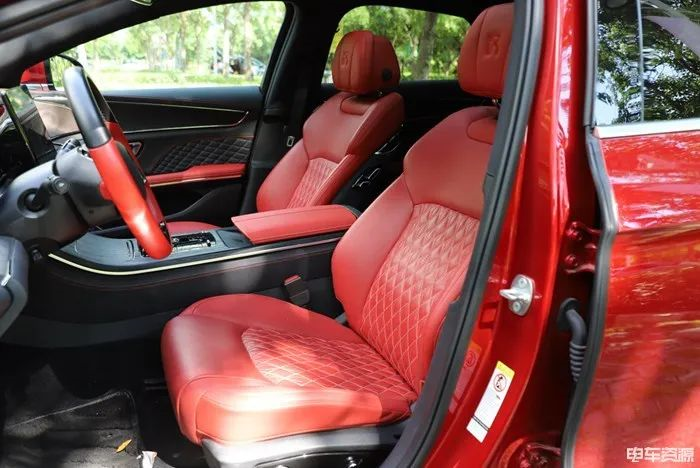
In terms of comfort configuration, all seats in the car are wrapped in leather and support ventilation and heating functions. The comfort and support after sitting are worth affirming. In addition, the front passenger seat has a “boss button” on the side, which adds to its sense of luxury and business atmosphere.

The backrest angle of the seats at both ends of the rear row can be adjusted, which can allow rear passengers to have a more comfortable sitting posture.

With the front seats adjusted to the lowest and most suitable driving position, the tester with a height of 178 cm still has a fist-sized space above the head, which is ideal for headroom.
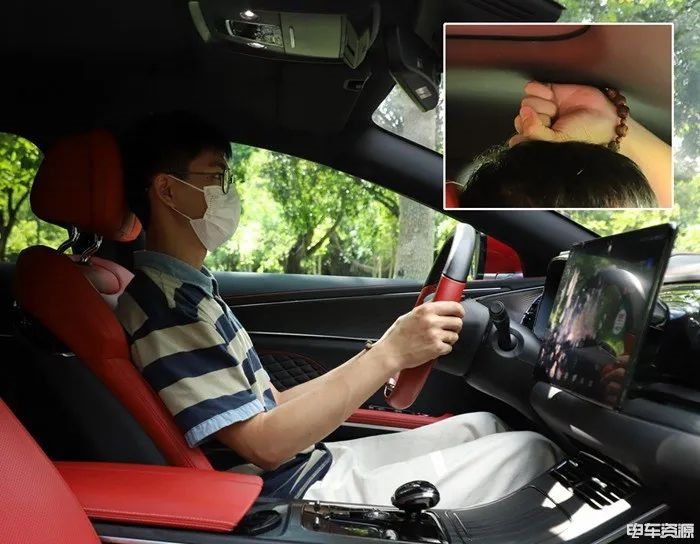
With the front seats remaining stationary, the legroom in the rear row is very spacious, and even with the backrest adjusted to the farthest position, there is still a fist-sized space above the head and plenty of legroom.

The trunk space is average and the rear seats cannot be folded down, so the volume cannot be further expanded. However, there is a small opening in the position of the rear armrest box that leads to the trunk, which is convenient for taking and placing small items.

Conclusion
While you emphasize space, I highlight driving control; while you pile up configurations, I emphasize the era of design. The BYD Han EV-AWD High Performance version can be said to maintain balance in all aspects, with a 2920 mm wheelbase, zero-to-100 km/h acceleration of 3.9 seconds, and the first use of lithium iron phosphate blade battery, which can confidently compete with each other.
As the saying goes, when others play “dimensional reduction strike”, I just “multi-point strike”, meaning that I play differently.
This article is a translation by ChatGPT of a Chinese report from 42HOW. If you have any questions about it, please email bd@42how.com.
